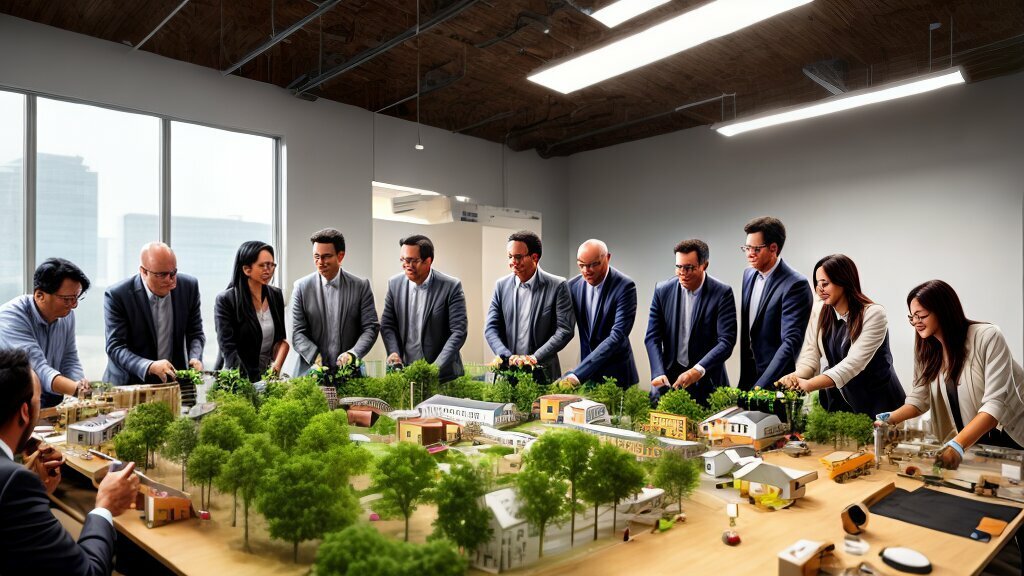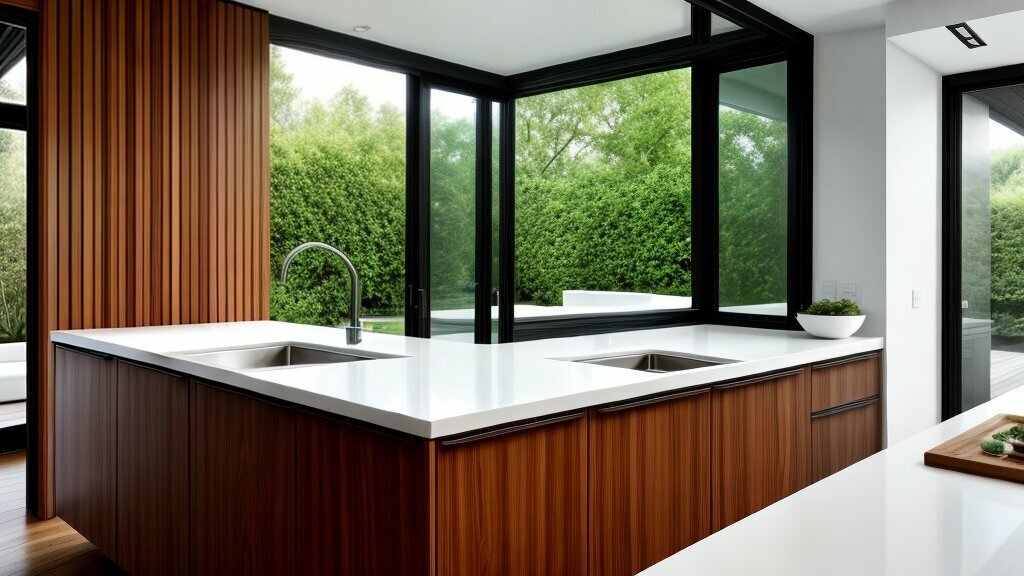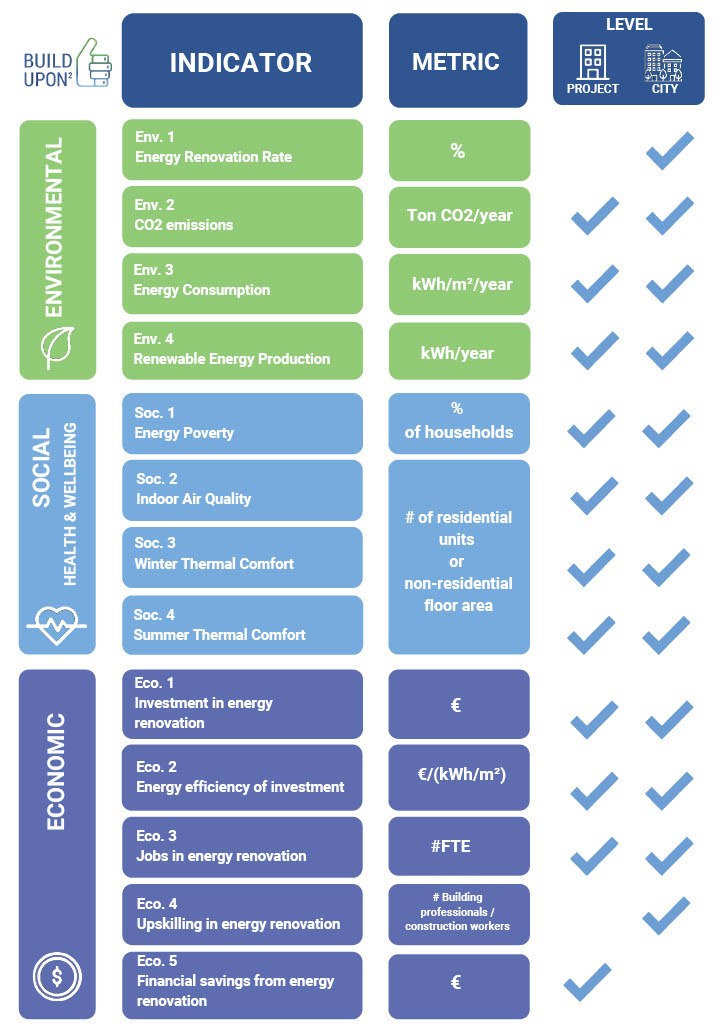Sustainable Retrofitting: Upgrading Existing Buildings for Energy Efficiency
Welcome to our article on sustainable retrofitting, an essential process for upgrading existing buildings to minimize their environmental impact and maximize energy efficiency. Sustainable retrofitting involves making eco-friendly refurbishments and energy-saving upgrades that reduce carbon emissions and tackle climate change. Let’s dive into the details of what sustainable retrofitting is, how it works, and the benefits it provides.
Key Takeaways:
- Sustainable retrofitting upgrades existing buildings for improved energy efficiency.
- It involves eco-friendly refurbishments and energy-saving upgrades that reduce carbon emissions and tackle climate change.
- Sustainable retrofitting plays a crucial role in the construction industry’s transition towards more eco-conscious practices.
Understanding Sustainable Retrofitting
Sustainable retrofitting is the process of upgrading existing buildings to improve their energy efficiency, reduce environmental impact, and enhance occupant comfort and health. The goal of sustainable retrofitting is to transform buildings into eco-friendly and sustainable spaces that meet the needs of present and future generations. Energy-efficient renovation is a crucial aspect of sustainable retrofitting, as it plays a significant role in reducing carbon emissions and combating climate change.
“Many buildings today were not designed with energy efficiency in mind, and retrofitting them provides the opportunity to significantly reduce energy consumption and associated emissions”.
The Goals and Benefits of Sustainable Retrofitting
The main goal of sustainable retrofitting is to decrease the carbon footprint of buildings, alongside reducing their energy bills. This process also leads to the creation of healthy and comfortable indoor environments, which enhances the overall quality of life. With sustainable retrofitting, building owners can also benefit from increased property values and reduced maintenance costs in the long run. Studies have shown that green building retrofit projects provide a higher return on investment compared to traditional renovation methods.
The Role of Energy-Efficient Renovation in Sustainable Retrofitting
Energy-efficient renovation improves the performance of a building, making it consume less energy and reduce its carbon emissions. This can be achieved through various measures such as upgrading insulation, windows, doors, and roof; installing energy-efficient lighting, heating, ventilation, and air conditioning systems (HVAC); using sustainable construction materials and practices; and incorporating renewable energy technologies such as solar panels and wind turbines. Energy-efficient renovation can reduce a building’s energy consumption by up to 50%, which translates to significant cost savings and environmental benefits.

“We can create energy-efficient buildings that are better for the environment, more comfortable for occupants, and more cost-effective to operate. Sustainable retrofitting transforms existing buildings into modern, eco-friendly, and sustainable spaces.”
The Process of Sustainable Retrofitting
Sustainable retrofitting involves a step-by-step process that begins with an assessment of the building’s current condition, energy consumption patterns, and potential for improvement. This process is critical to developing a comprehensive retrofitting plan that aligns with the building’s unique needs and goals.
The following are the key steps involved in sustainable retrofitting:
| Step | Description |
|---|---|
| Assessment | Conduct a thorough evaluation of the building’s current state, including its energy usage, HVAC systems, insulation, lighting, and other equipment. Identify areas that require upgrades or improvements. |
| Planning | Develop a retrofitting plan that prioritizes energy-efficient upgrades based on the assessment’s findings and the building owner’s goals and budget. The plan should include a timeline, budget, and project goals. |
| Implementation | Execute the retrofitting plan by carrying out the identified upgrades, such as installing insulation, upgrading HVAC systems, and upgrading lighting. Ensure that all upgrades meet the standards for sustainable construction and green building retrofit practices. |
| Monitoring | Monitor the results of the retrofitting project to verify that it meets the intended goals and to identify areas for further improvement. This includes measuring energy consumption, indoor air quality, and occupant comfort levels. |
Incorporating green building retrofit techniques into each of these steps is critical to ensure maximum energy savings and minimize the building’s environmental impact.

As building owners and managers embark on their sustainable retrofitting journey, it’s important to work with professionals who have experience in sustainable construction and green building best practices. By following a comprehensive retrofitting process and integrating eco-friendly upgrades and materials, building owners can achieve significant energy savings and reduce their carbon footprint.
Energy-Saving Upgrades for Sustainable Retrofitting
Implementing energy-saving upgrades is a crucial aspect of sustainable retrofitting. Upgrading your building with modern technologies can significantly reduce energy consumption, lower carbon emissions, and save costs on utility bills. Here are some examples of energy-saving upgrades that can be implemented during a sustainable retrofitting project:
| Upgrade | Description |
|---|---|
| Insulation | Adding insulation to walls, roofs, and floors can help keep your building cool in the summer and warm in the winter, reducing the need for heating and air conditioning. |
| Energy-efficient lighting | Replacing traditional light bulbs with LED lights can significantly reduce energy consumption and lower your utility bills. |
| Smart thermostats | Installing smart thermostats can help you regulate the temperature in your building more efficiently, saving energy and money. |
| Renewable energy systems | Integrating solar panels, wind turbines, or other renewable energy systems can help you generate clean energy and reduce your dependence on the grid. |
When implementing these upgrades, it’s important to adopt sustainable construction practices to minimize environmental impact. Using eco-friendly materials such as recycled content, low VOC paints, and natural insulation options can create a healthier indoor environment and reduce the carbon footprint of your building.

Investing in energy-saving upgrades not only benefits the environment but also provides financial returns in the long run. By reducing energy consumption, you can significantly lower your utility bills and increase the value of your property. Moreover, sustainable retrofitting can contribute to a more resilient and sustainable future, creating a better world for future generations.
Eco-Friendly Materials for Sustainable Retrofitting
Incorporating eco-friendly materials is a crucial aspect of sustainable retrofitting projects. Using sustainable construction materials contributes to a healthier indoor environment, reduces the environmental impact of building projects, and supports the circular economy.
Some of the most popular eco-friendly refurbishment options include:
| Materials | Description |
|---|---|
| Recycled Content | Reusing materials like glass, steel, and plastic not only reduces waste but also saves energy by cutting down on the manufacturing process. |
| Low VOC Paints | Traditional paints release harmful chemicals into the air, whereas low VOC (volatile organic compound) alternatives have fewer or zero harmful emissions, creating a healthier environment for occupants. |
| Natural Insulation | Natural insulations like wool, cellulose, and hemp are renewable and biodegradable. They are also highly effective at retaining heat, reducing energy costs, and preventing heat loss. |
The use of these eco-friendly materials in sustainable construction is becoming increasingly popular due to their environmental benefits and cost-effectiveness. Incorporating these materials into a retrofitting project can significantly contribute to a sustainable future.

Case Studies: Successful Sustainable Retrofitting Projects
Real-life case studies demonstrate the successful implementation of sustainable retrofitting projects. These projects have resulted in improved energy efficiency, reduced environmental impact, and enhanced comfort for building occupants.
Residential Home: Eco-Friendly Refurbishment
A residential home in the UK underwent an eco-friendly refurbishment to improve its energy efficiency. The project included the installation of insulation, energy-efficient lighting, and a new boiler. The home also incorporated sustainable construction materials such as recycled content and low VOC paints.
The results of the project were significant, with a 63% decrease in energy consumption and a 71% reduction in CO2 emissions. The home also saw an improvement in air quality and overall comfort for the occupants.

Commercial Property: Energy-Saving Upgrades
A commercial property in the US underwent energy-saving upgrades as part of a sustainable retrofitting project. The upgrades included the installation of LED lighting, a smart HVAC system, and solar panels on the roof.
The project resulted in a 45% reduction in energy consumption and a 50% decrease in water usage. The building also achieved LEED Gold certification for its sustainable features, improving its marketability and value.
Multi-Family Building: Sustainable Home Renovation
A multi-family building in Canada underwent a sustainable home renovation to improve its energy efficiency and reduce its environmental impact. The building incorporated energy-saving upgrades such as insulation, high-efficiency windows, and LED lighting.
The project resulted in a 40% decrease in energy consumption and a 30% reduction in water usage. The building also saw an improvement in indoor air quality and comfort for residents.
Financial Incentives for Sustainable Retrofitting
If you’re concerned about the costs of eco-conscious retrofitting, there’s good news: financial incentives are available to help offset the expenses of sustainable retrofitting projects. Whether you’re upgrading your home or commercial building, taking advantage of these incentives can make a difference to your budget.
The government provides grants, tax credits, and rebates that can help support your energy-saving upgrades. For instance, the Green Homes Grant is a new program available to homeowners in England. The grant covers up to two-thirds of the cost of energy-efficient renovations, with a maximum contribution of £5,000 per household. Similarly, the Non-Domestic Renewable Heat Incentive (RHI) is a scheme for businesses, public sector and non-profit organisations in the UK, encouraging the use of renewable heating technologies.
It’s important to note that financial incentives and funding opportunities may vary depending on your location. Therefore, check with your local government or utility company to see what programs are available in your area.

Investing in sustainable retrofitting not only benefits the environment, but it can also help you save money in the long term through reduced energy consumption and overheads. Plus, with the help of financial incentives, the upfront costs of sustainable retrofitting might be more manageable than you think.
Overcoming Challenges in Sustainable Retrofitting
While sustainable retrofitting holds numerous benefits, there are potential challenges that can arise during the process. These obstacles should not discourage you from pursuing eco-conscious retrofitting, but rather motivate you to find solutions that align with your goals and values. Here are some common challenges and strategies to overcome them:
| Challenge | Solution |
|---|---|
| Budget constraints | Consider using financing options, such as green loans or energy service agreements, which can spread the cost of upgrades over a longer period. Prioritize upgrades that offer the highest return on investment (ROI) and explore funding opportunities from government grants and incentives. |
| Technical complexities | Work with a team of experienced professionals who can guide you through the complex process of sustainable retrofitting. Consider hiring an energy manager or consultant to oversee the project and ensure it meets your efficiency goals. Additionally, utilize technology and monitoring tools to optimize your systems and identify areas for improvement. |
| Resistance to change | Overcoming resistance to change can be challenging, but it is possible. Involve stakeholders early in the process and communicate the benefits and ROI of sustainable retrofitting. Offer training and education to your staff to help them understand the importance of energy-efficient renovation. Celebrate successes and achievements along the way to maintain momentum and motivation. |
By anticipating these challenges and implementing appropriate solutions, you can ensure a successful sustainable retrofitting project that aligns with your goals and values.

Training and Education for Sustainable Retrofitting
One of the main challenges in sustainable retrofitting is the shortage of skilled professionals with experience in green building practices. However, training and education programs can provide individuals with the necessary knowledge and expertise to implement energy-efficient renovation projects effectively.
Several organizations offer courses, certifications, and workshops that cover various aspects of sustainable retrofitting, from energy management to eco-friendly materials. For instance, the Green Business Certification Inc. (GBCI) offers the LEED Green Associate credential, which demonstrates knowledge in green building principles and practices. Similarly, the Building Performance Institute (BPI) provides training and certification for professionals in energy efficiency and building performance.
Besides formal education, on-the-job training and mentorship can also be valuable for individuals interested in pursuing a career in sustainable retrofitting. By working alongside experienced professionals, trainees can learn practical skills while contributing to the completion of sustainable construction projects.

Image source: seowriting.ai
Future Trends in Sustainable Retrofitting
The field of sustainable retrofitting is constantly evolving, with new advancements in technology and techniques emerging all the time. Here are some of the exciting future trends to watch out for:
The Integration of IoT and AI in Energy Management Systems
Internet of Things (IoT) devices and Artificial Intelligence (AI) algorithms are increasingly being used to monitor and optimize the energy performance of buildings. Smart sensors can collect data on a range of factors such as temperature, humidity, and occupancy, allowing building managers to make informed decisions about energy usage. AI algorithms can then analyze this data and make recommendations for further improvements, leading to even greater energy savings.
One example of this is the use of predictive maintenance in HVAC systems. By analyzing data from sensors, AI algorithms can identify potential issues before they become a problem, allowing for timely repairs and preventing equipment breakdowns. This can lead to significant cost savings over the long term.
The Rise of Passive House Design
Passive House design is an innovative approach to building that emphasizes energy efficiency and environmental sustainability. The design principles focus on minimizing energy consumption by optimizing insulation, air tightness, and energy recovery systems. This leads to buildings that require very little energy to heat or cool, resulting in significantly reduced carbon emissions and energy costs.
As the importance of sustainable construction continues to grow, we can expect to see more buildings adopting passive house design principles. In fact, some countries, such as Germany, have already set ambitious targets for implementing this approach.
The Use of Virtual and Augmented Reality in Sustainable Retrofitting
Virtual and augmented reality technologies are increasingly being used in the construction industry to visualize and simulate building designs. This can be especially useful in sustainable retrofitting projects, where it can be difficult to visualize the impact of proposed changes.
Using virtual and augmented reality, building owners and contractors can get a better sense of what the finished project will look like, identify potential issues before construction begins, and make more informed decisions about design and materials. This can lead to a more efficient and cost-effective retrofitting process.

Conclusion
As sustainable retrofitting continues to gain momentum, we can expect to see more innovative solutions and approaches emerging. By staying up to date with these trends, building owners and contractors can ensure they are implementing the most effective and efficient strategies for improving energy efficiency and reducing environmental impact.
Benefits of Sustainable Retrofitting for Communities
Sustainable retrofitting not only benefits individual buildings, but also communities at large. By upgrading existing buildings for energy efficiency, we can create a more sustainable, resilient, and liveable society.
Enhancing the Quality of Life
Sustainable retrofitting can enhance the quality of life for residents by improving the indoor environment, increasing comfort, and reducing noise pollution. By upgrading insulation, installing efficient heating and cooling systems, and using eco-friendly materials, we can create healthier living spaces that promote well-being.
Creating Green Jobs
Sustainable retrofitting also creates green jobs in areas such as building assessment, project management, energy auditing, and construction. These jobs have a positive impact on local economies, providing skilled employment opportunities and boosting community development.
Contributing to a More Resilient and Sustainable Society
By reducing carbon emissions and energy consumption, sustainable retrofitting contributes to a more resilient and sustainable society. By upgrading our existing buildings, we can reduce our reliance on fossil fuels, improve air quality, and mitigate the effects of climate change.
| Key Takeaways: |
|---|
| Sustainable retrofitting enhances the quality of life for residents by improving the indoor environment, increasing comfort, and reducing noise pollution |
| Sustainable retrofitting creates green jobs in areas such as building assessment, project management, energy auditing, and construction |
| Sustainable retrofitting contributes to a more resilient and sustainable society by reducing carbon emissions and energy consumption |

Conclusion
In conclusion, sustainable retrofitting is a crucial approach for upgrading existing buildings to improve energy efficiency and reduce environmental impact. By understanding the process of sustainable retrofitting and implementing energy-saving upgrades and eco-friendly materials, we can create healthier indoor environments while minimizing our carbon footprint.
Real-life case studies have shown the benefits of sustainable home renovation and eco-conscious retrofitting, from energy savings to improved comfort. Financial incentives such as government grants and tax credits are available to help offset the costs of energy-saving upgrades, while training and education programs can equip professionals with the necessary skills for effective green building retrofit.
The Future of Sustainable Retrofitting
As technology continues to evolve, we can expect to see even more innovation in sustainable retrofitting. Advancements such as IoT and AI in energy management systems offer exciting possibilities for the built environment to become even more energy-efficient and sustainable.
The wider benefits of sustainable retrofitting for communities cannot be overstated. By adopting environmentally friendly modernization practices, we can enhance the quality of life for residents, create green jobs, and contribute to a more resilient and sustainable society.
We encourage readers to take action and start their sustainable retrofitting journey today. With the right knowledge, resources, and support, we can work towards a future where sustainable construction and energy-efficient renovation are the norm.
FAQ
Q: What is sustainable retrofitting?
A: Sustainable retrofitting refers to the process of upgrading existing buildings to improve their energy efficiency and reduce their environmental impact. It involves incorporating eco-friendly materials, energy-saving upgrades, and green building retrofit techniques.
Q: Why is sustainable retrofitting important?
A: Sustainable retrofitting is important because it helps reduce carbon emissions, combat climate change, and improve the overall energy performance of buildings. It also contributes to a healthier indoor environment and promotes the efficient use of resources.
Q: What is the process of sustainable retrofitting?
A: The process of sustainable retrofitting involves several steps, including assessment, planning, implementation, and monitoring. It is important to incorporate green building retrofit techniques to maximize energy savings and minimize environmental impact.
Q: What are some energy-saving upgrades for sustainable retrofitting?
A: Energy-saving upgrades for sustainable retrofitting include insulation, energy-efficient lighting, smart thermostats, and renewable energy systems. These upgrades help reduce energy consumption and improve the overall energy efficiency of buildings.
Q: What are eco-friendly materials for sustainable retrofitting?
A: Eco-friendly materials for sustainable retrofitting include recycled content, low VOC paints, and natural insulation options. Using these materials helps minimize environmental impact and create a healthier indoor environment.
Q: Can you provide examples of successful sustainable retrofitting projects?
A: Yes, there have been many successful sustainable retrofitting projects for both residential homes and commercial properties. These projects have resulted in energy savings, improved comfort, and reduced environmental impact.
Q: Are there financial incentives for sustainable retrofitting?
A: Yes, there are financial incentives available for sustainable retrofitting projects. These include government grants, tax credits, and rebates that can help offset the costs of energy-saving upgrades.
Q: What challenges are faced in sustainable retrofitting?
A: Common challenges in sustainable retrofitting include budget constraints, technical complexities, and resistance to change. However, with proper planning and strategies, these challenges can be overcome.
Q: Is there training and education available for sustainable retrofitting?
A: Yes, there are training courses, certifications, and workshops available for individuals interested in sustainable retrofitting. These help develop the necessary skills and knowledge to implement green building retrofit techniques effectively.
Q: What are the future trends in sustainable retrofitting?
A: Future trends in sustainable retrofitting include advancements in technology, such as the integration of IoT and AI in energy management systems. These trends have the potential to further enhance energy efficiency and sustainability in the built environment.
Q: What are the benefits of sustainable retrofitting for communities?
A: Sustainable retrofitting brings wider benefits to communities, including improved quality of life for residents, the creation of green jobs, and the development of more resilient and sustainable societies.








